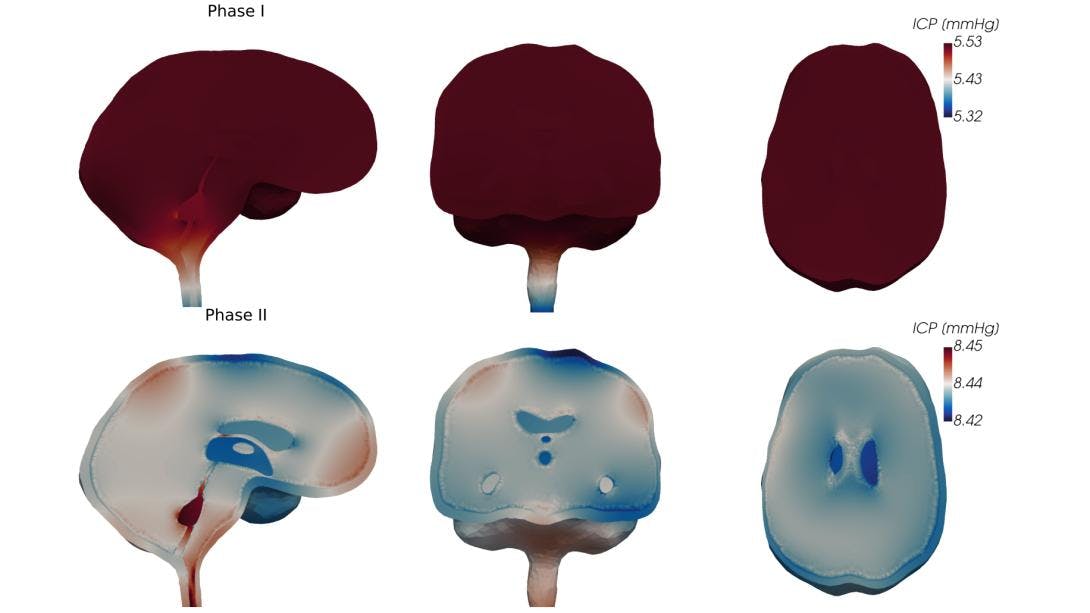
New Jebsen Center for research on brain fluids
Published:
Simula is the computational partner in a new K.G. Jebsen Center for Brain Fluid Research. The center emerged from a decade of interdisciplinary collaboration and will lead to the development of new tools for diagnostics and treatment of brain diseases.
The center is led by UiO Professor Per Kristian Eide, and Simula Chief Research Scientist Marie E. Rognes is its Deputy Director.
“We are very excited to receive this recognition and support of our research and consortium from the K.G. Jebsen Foundation,” says Marie E. Rognes.
“Our Center for Brain Fluid Research builds on a decade of groundbreaking joint research in the mathematical sciences and basic neurosciences, and we will together translate these discoveries to clinical medicine, targeting new diagnostics and therapies for dementia and brain cancer.”
The new center, named K.G. Jebsen Center for Brain Fluid Research, is hosted and led by the University of Oslo and Oslo University Hospital with Simula as a major partner. In total, the center will receive 61 million Norwegian kroner over five years.
From mathematics to medicine and the bench to bedside
Interdisciplinary and translational collaboration between clinical and basic medicine, medical physics, mathematics, and computational science is an important part of the center.
The center’s researchers actively develop and use mathematical models to add value to existing imaging techniques. An explicit ambition is to develop combined biophysics and artificial intelligence models to provide new knowledge on how the brain’s clearance system works. These models will be trained on magnetic resonance (MR) images and blood samples, and could be used for personalised diagnostics or treatment; for example, to assess future risk of cognitive impairment and dementia, or to adjust the dosage of chemotherapy for brain cancer.
The partners have been collaborating closely during the last decade and are at the forefront of bringing new knowledge of brain fluids into clinical medicine. They are researchers and medical doctors in clinical medicine, basic neurosciences, mathematical sciences, and medical technology.

Together, they have developed pioneering knowledge about the human glymphatic system, which moves and clears fluids and other substances within and around the brain. They have developed new MR imaging protocols and simulation technology for visualising and predicting how injected drugs or metabolic waste products move within the brain. They have also found new blood-based biomarkers that can potentially tell us how well the brain is clearing these substances.
Simula's role and the "best of both worlds"
The center has three main research goals: to provide imaging- and blood-based biomarkers for precision diagnosis of dementia, to provide new tools for precision treatment of brain cancer, and to give fundamental understanding of the mechanisms underlying brain solute transport and clearance. New computational mathematics, including physics-based models, simulation technology, and artificial intelligence, underpins all three research objectives.
Simula will lead the center’s activities in computational and translational mathematics.
“We aim to develop personalised computational models integrating MR imaging data and prior knowledge of brain clearance. By combining artificial intelligence and data-driven techniques with brain physics-based mathematical models, we hope to take advantage of ‘the best of both worlds’,” says Rognes.
About the K.G. Jebsen Foundation
The K.G. Jebsen Foundation (kgjf.org) has a long-term view as far as supportive innovative approaches, acknowledging that making a difference can take many years to achieve. Based on its independent due diligence, the foundation has an overall aim to enhance the well-being of people and promote human and social development, through the support of grantees in the areas of health, education, science, culture, and the environment around the world.
The partners in the center
- Per Kristian Eide, Center Director, Professor and senior consultant neurosurgeon at the Department of Neurosurgey, Oslo University Hospital (OUS) and Institute of Clinical Medicine, University of Oslo (UiO).
- Marie E. Rognes, Deputy Director, Chief Research Scientist at Simula Research Laboratory
- Kyrre Eeg Emblem, Head of the Department of Physics and Imaging Analysis, OUS
- Rune Enger, Associate Professor and Doctor at the Division of Anatomy, Institute of Basic Medical Sciences, UiO
- Susanne Sørensen Hernes, Geriatrician and Associate Professor at the Department of Clinical Science, University of Bergen, and Sørlandet Hospital
- Kent-Andre Mardal, Professor at the Department of Mathematics, UiO and Adjunct Research Scientist at Simula Research Laboratory
- Geir Ringstad, Section Leader and consultant neuroradiologist at the Department of Radiology, OuS-Rikshospitalet.
References:
*For more information on the figure, see Causemann, M., Vinje, V. & Rognes, M.E. Human intracranial pulsatility during the cardiac cycle: a computational modelling framework. Fluids Barriers CNS 19, 84 (2022). https://doi.org/10.1186/s12987-022-00376-2.
See also: https://www.med.uio.no/klinmed/om/aktuelt/aktuelle-saker/2024/storsatsing-pa-hjerneforskning-ved-uio.html
